Of course, sea anemones don’t have faces. They do have mouths, though, and since a mouth is usually part of a face, you can sort of imagine what I’m getting at. The sunburst anemone, Anthopleura sola, is one of my favorite intertidal animals to photograph. Of the four species of Anthopleura that we have on our coast, A. sola is the most variable, which is why it keeps catching my eye.
This afternoon I met the members of the Cabrillo College Natural History Club for the low tide at Natural Bridges. Here are some of the A. sola anemones we saw.
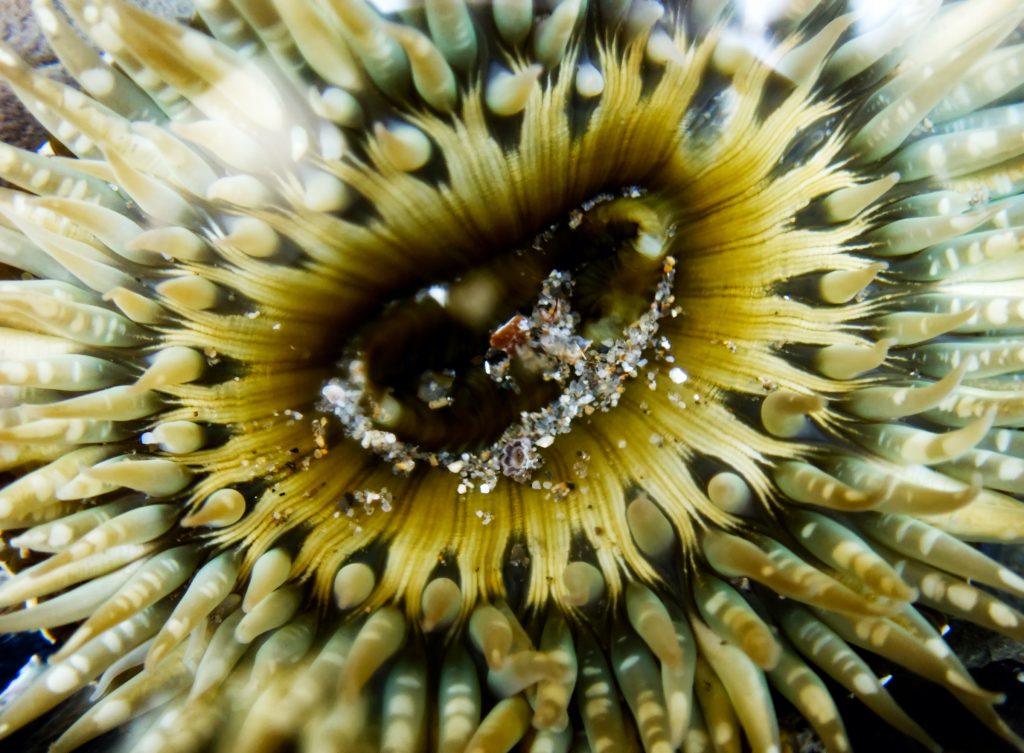
2020-02-22
© Allison J. Gong
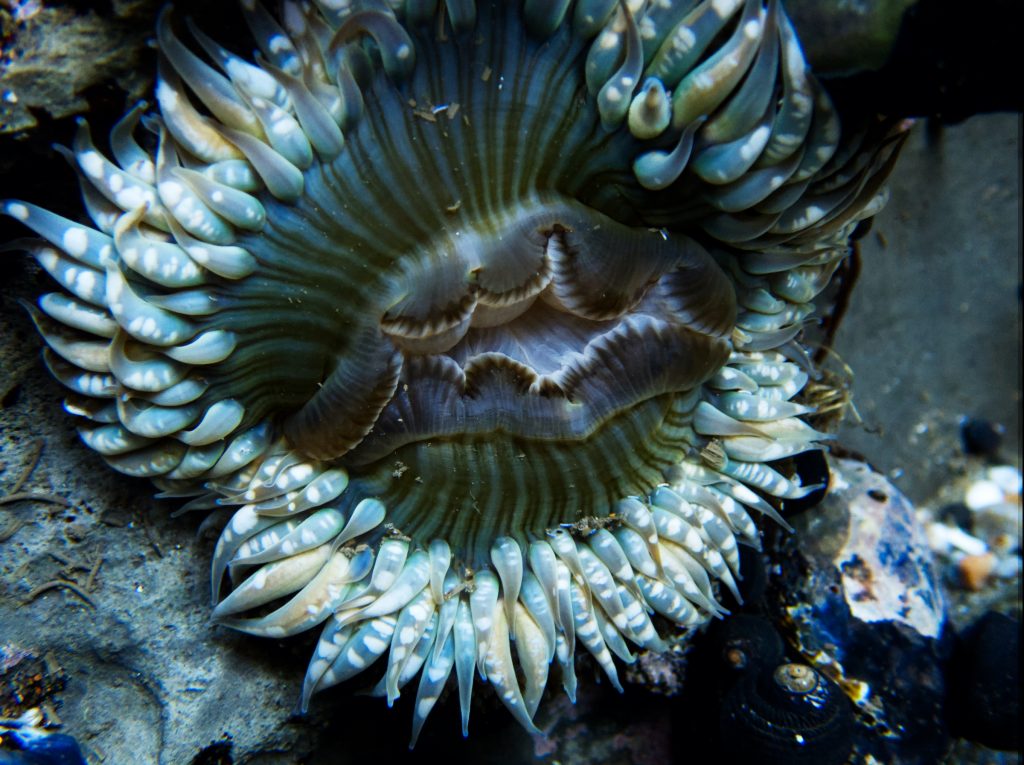
2020-02-22
© Allison J. Gong
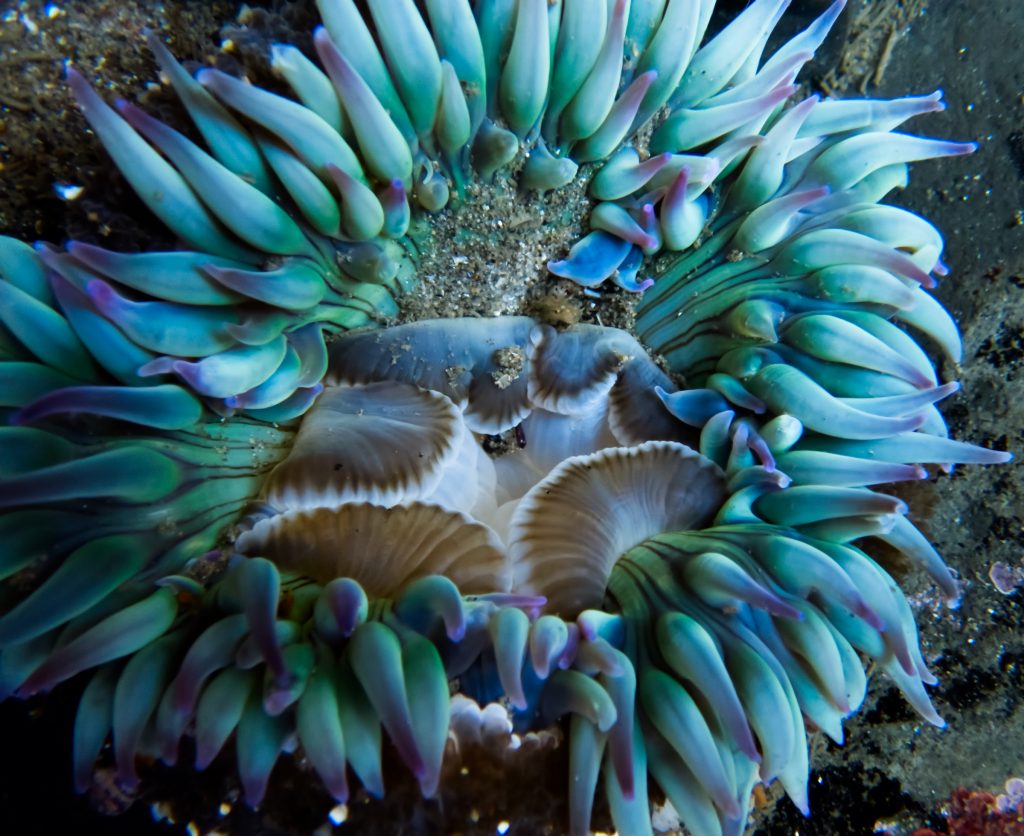
2020-02-22
© Allison J. Gong
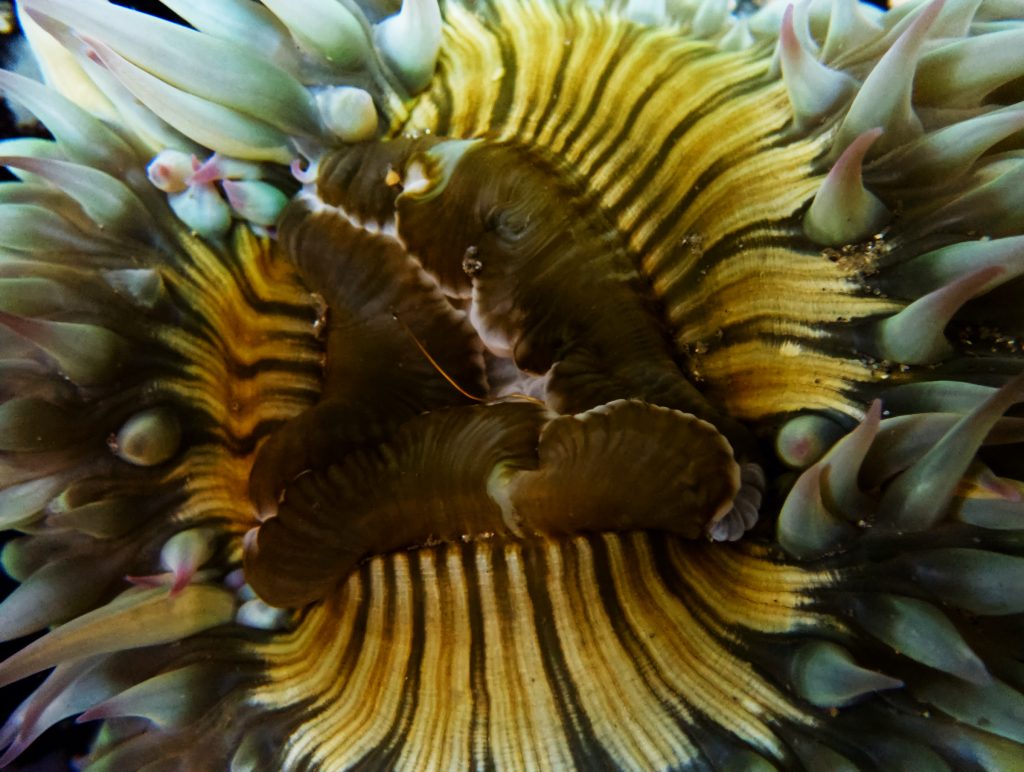
2020-02-22
© Allison J. Gong
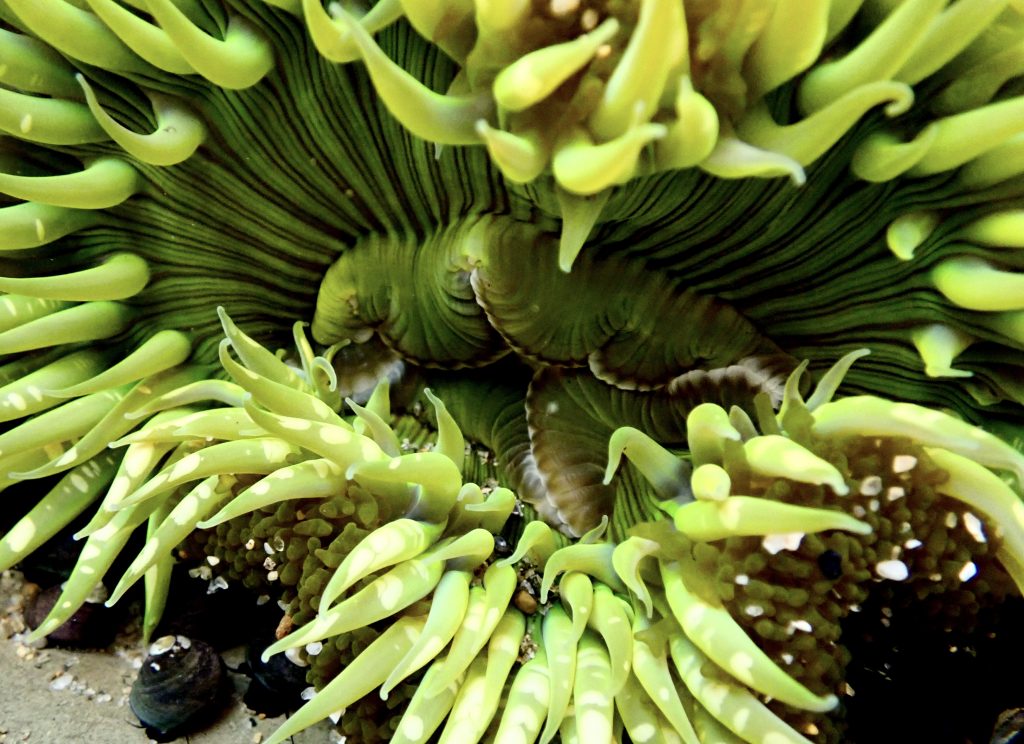
2020-02-22
© Allison J. Gong
Such an amazingly photogenic animal, isn’t it?
This past Fall semester the NHC went tidepooling at Pigeon Point. Today we were at Natural Bridges, and later in the spring we are going to Asilomar. I didn’t intend it, but this school year the club is getting a look at three very different intertidal sites.
I love it when things work out that way!

Gorgeous photos
I so appreciate your combination of science and aesthetics. Helping children understand that the two can be integral to each other without violating the standards of each one is such a pleasure.
Great photos!